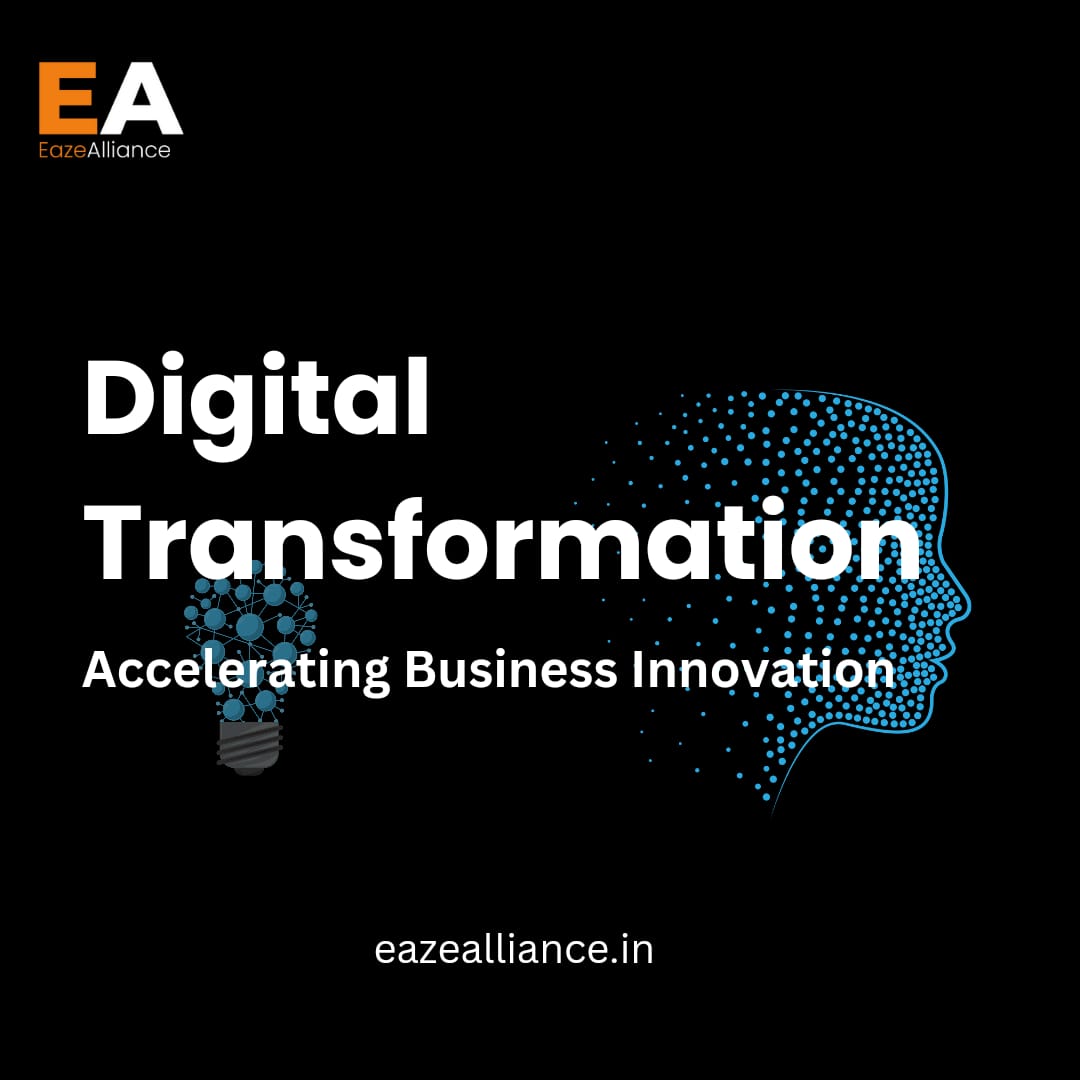Digital Transformation: Accelerating Business Innovation
 Eazealliance
Eazealliance 
Introduction
Digital transformation has emerged as a critical driver of business innovation, reshaping industries by leveraging technology to enhance processes, products, and customer experiences. Organizations that embrace this transformation are often more agile, competitive, and capable of meeting the evolving demands of their customers.
1. Understanding Digital Transformation
Digital transformation involves the comprehensive integration of digital technologies into all areas of a business. This change is not just about technology; it requires a cultural shift, rethinking traditional business models and practices.
2. The Role of Technology
Technological advancements such as cloud computing, artificial intelligence (AI), the Internet of Things (IoT), and big data analytics play pivotal roles in driving innovation. These technologies enable organizations to:
Automate Processes: Streamlining operations to reduce costs and increase efficiency.
Enhance Data Utilization: Collecting and analyzing vast amounts of data to inform strategic decisions.
Improve Customer Engagement: Offering personalized experiences through data insights.
3. Customer-Centric Innovations
In the digital age, customer expectations have shifted dramatically. Businesses must adapt by placing the customer at the center of their strategies. Key strategies include:
Personalization: Utilizing data to tailor products and services to individual preferences.
Omnichannel Experience: Ensuring seamless interactions across various platforms, whether online or offline.
Feedback Loops: Implementing systems to gather and act on customer feedback in real-time.
4. Agility and Flexibility
Digital transformation fosters a culture of agility, allowing organizations to pivot quickly in response to market changes. Agile methodologies, such as Scrum and Kanban, promote iterative development, enabling teams to:
Experiment and Innovate: Rapid prototyping and testing of new ideas.
Collaborate Across Teams: Breaking down silos to foster cross-functional teamwork.
5. Data-Driven Decision Making
Data is at the heart of digital transformation. By leveraging analytics, organizations can gain insights that inform strategic initiatives. This data-driven approach enables:
Predictive Analytics: Anticipating customer behavior and market trends.
Performance Measurement: Tracking key performance indicators (KPIs) to assess the effectiveness of strategies.
6. Emerging Technologies and Innovation
Incorporating emerging technologies can lead to significant innovation. For example:
Artificial Intelligence: Enhancing decision-making, automating customer service, and optimizing supply chains.
Blockchain: Improving transparency and security in transactions.
IoT: Enabling smart products and real-time data collection for better customer insights.
7. Change Management and Culture
Successful digital transformation requires a robust change management strategy. Key components include:
Leadership Commitment: Leadership must champion the transformation and communicate its importance.
Employee Engagement: Involving employees in the process to build a culture of innovation and adaptability.
Training and Development: Providing employees with the skills necessary to thrive in a digital environment.
8. Case Studies of Successful Digital Transformation
Highlighting real-world examples can illustrate the benefits of digital transformation. Companies like Amazon, Netflix, and Tesla have harnessed digital tools to innovate and disrupt traditional industries, setting benchmarks for others to follow.
9. Measuring Success
Organizations need clear metrics to evaluate the success of their digital transformation initiatives. Common metrics include:
Customer Satisfaction Scores: Assessing the impact on customer experience.
Operational Efficiency: Measuring improvements in productivity and cost reductions.
Market Share Growth: Evaluating the competitive advantage gained through innovation.
10. Future Trends in Digital Transformation
The landscape of digital transformation is continually evolving. Future trends may include:
Increased Focus on Cybersecurity: Protecting data as reliance on digital systems grows.
Sustainability Initiatives: Integrating eco-friendly practices into digital strategies.
Hybrid Work Models: Adapting to the new normal of remote and flexible work arrangements.
Conclusion
Digital transformation is not merely a technological shift; it’s a holistic change that empowers organizations to innovate and thrive in a competitive landscape. By embracing this transformation, businesses can unlock new opportunities, enhance customer experiences, and drive sustainable growth.
Subscribe to my newsletter
Read articles from Eazealliance directly inside your inbox. Subscribe to the newsletter, and don't miss out.
Written by

Eazealliance
Eazealliance
We accelerate your sales cycle while teaching you how easily you can create relationship where clients love to buy from you.